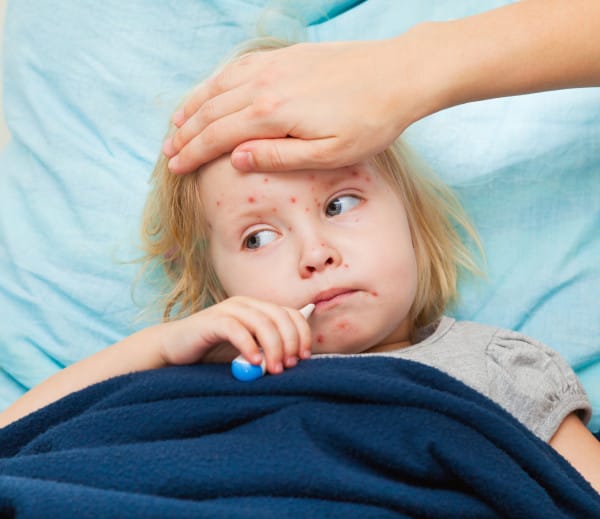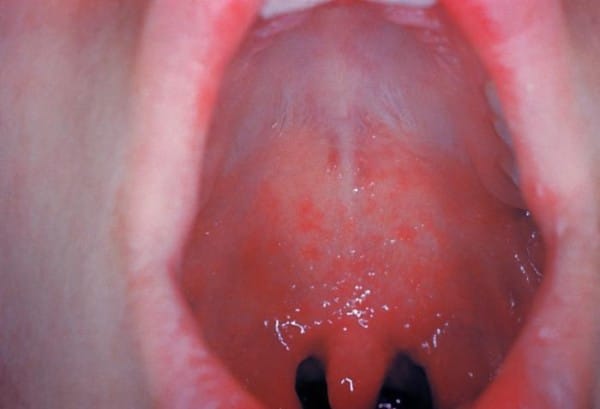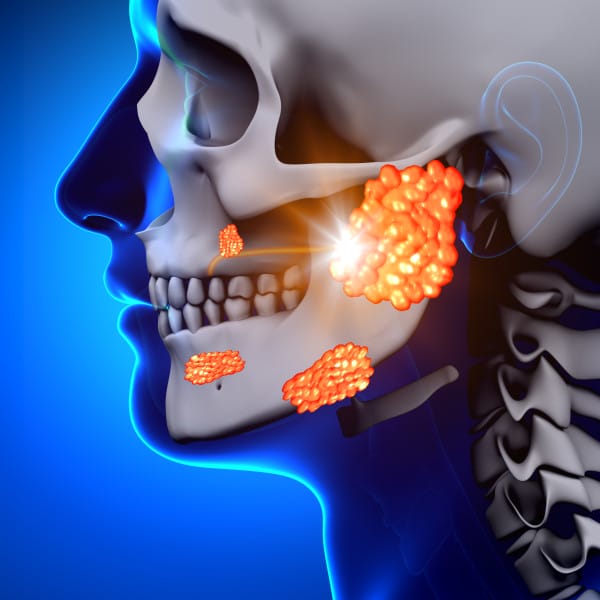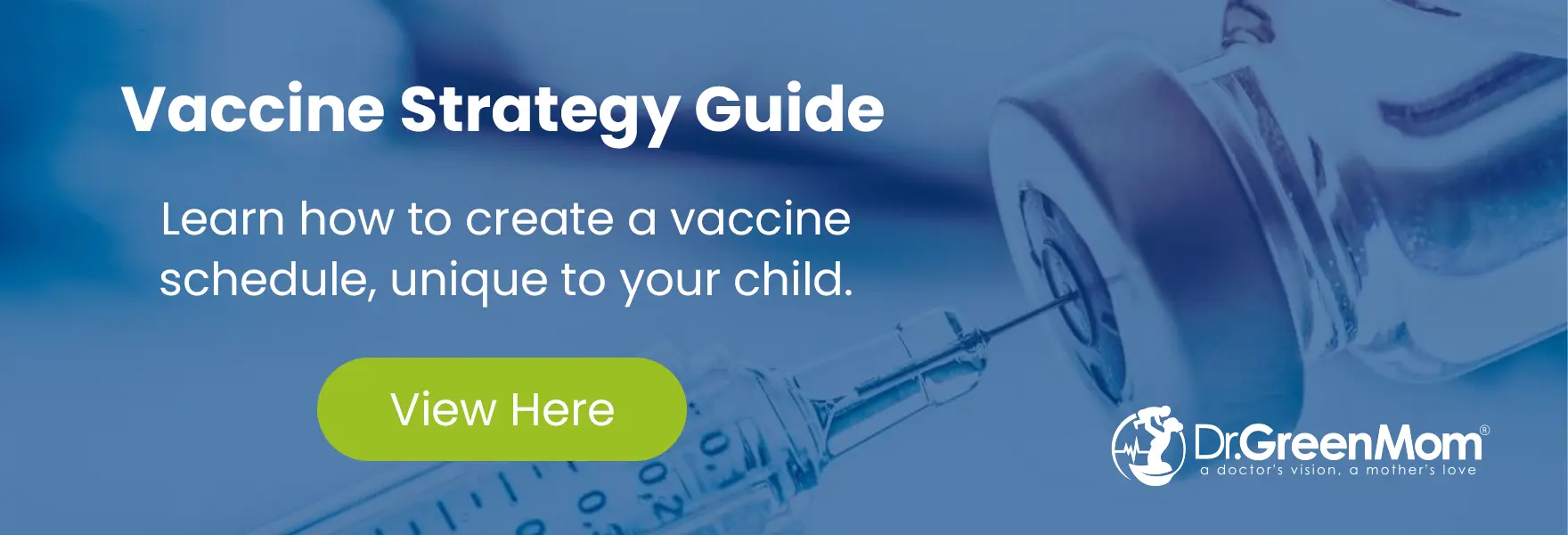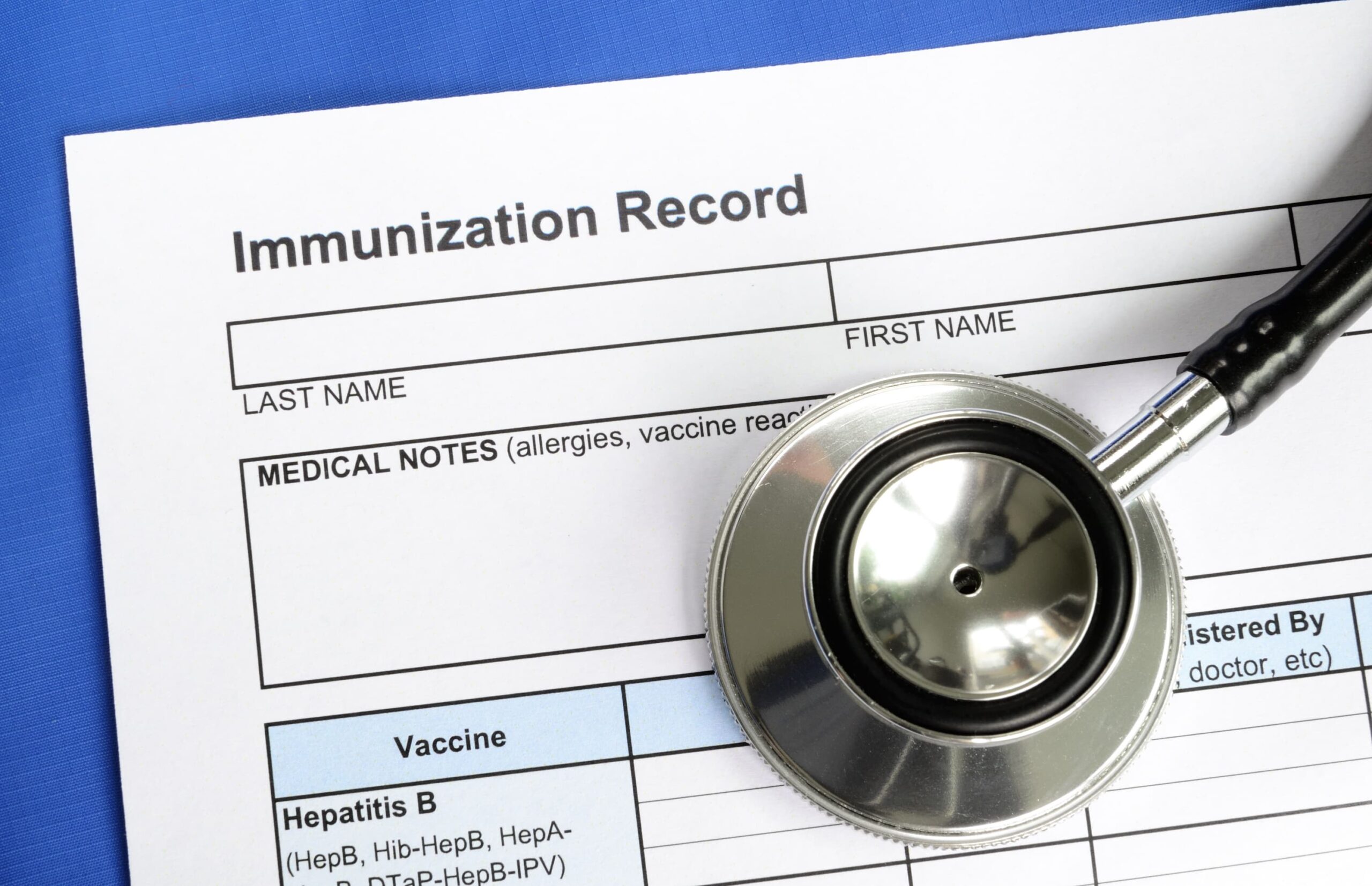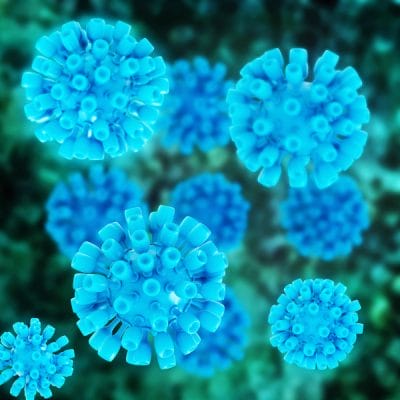- What is MMR
- Measles
- What is Measles
- Measles Symptoms
- Conventional Treatment for Measles
- Mumps
- What is Mumps
- Mumps Symptoms
- Conventional Treatment for Mumps
- Rubella
- What is Rubella
- Rubella Symptoms
- Conventional Treatment for Rubella
- MMR Vaccine
- When is the MMR Vaccine Given
- Efficacy of the MMR Vaccine
- How Long Does MMR Vaccine Protection Last
- Ingredients in the MMR Vaccine
- MMR FDA Package Inserts
- Controversy and the MMR Vaccine
- MMR Vaccine Reactions
- The Bottom Line and the MMR Vaccine
- Who Should Not Get the MMR Vaccine
- References
- Resources
What is MMR?
MMR stands for Measles, Mumps, and Rubella.
Back to Top
What is Measles?
- Measles is an acute systemic viral infectious disease, most likely occurring in late winter and early spring.
- Character symptoms of fever, rash (red, round bumps and spots all over the body), red eyes, runny nose, and cough.
- Measles transmission is like the common cold.
- Persons who contract measles have lifelong immunity.
- The primary site of infection is the respiratory epithelium of the nasopharynx.
- Measles is contagious 4 days prior to and 4 days after onset of rash.
Measles Symptoms
- The incubation period of measles, from exposure to prodrome averages 10–12 days.
- From exposure to rash onset averages 14 days (range, 7–18 days).
- The prodrome lasts 2–4 days (range 1–7 days).
- It is characterized by fever, which increases in stepwise fashion, often peaking as high as 103°–105°F.
- This is followed by the onset of cough, coryza (runny nose), or conjunctivitis.
- Koplik spots, a rash (enanthem) present on mucous membranes, is considered to be pathognomonic for measles. It occurs 1–2 days before the rash to 1–2 days after the rash, and appears as punctate blue–white spots on the bright red background of the buccal mucosa. [1]
Mild Case
- low to mid grade fever
- rash (red, round bumps and spots all over body)- 14 days after initial exposure and starts on head and neck, lasts 5-6 days
- red eyes
- runny nose
- cough
- The child will be housebound for about a week’s time and then return to normal daily activities thereafter
Moderate Case
- the above symptoms accompanied with ear “infection” (7% of cases)- easily treated with antibiotics when appropriate
- pneumonia (6% of cases) -easily treated with antibiotics when appropriate
- diarrhea (8% of cases)
- a high fever may quite miserable for a few days
Severe Case
- encephalitis or encephalopathy (0.1% of cases)
- seizures (0.6% of cases)
- death (0.2% of cases- 15% of the 0.1% encephalitis patients or complications with pneumonia)
(cases are based on 1985-1992 surveillance data from the CDC)
IMPORTANT TO NOTE:
- 50-100 cases of Measles reported per year in the United States
- 1 in 1,000 may die from measles- so that means 1 person every 10 to 20 years
- CDC also states 1 death per year from measles, so this can be confusing?
Measles Conventional Treatment
There is no specific medical treatment and the virus must run its course, then 100% lifelong immunity.
Back to Top
Mumps
- Mumps virus is a paramyxovirus, an acute viral illness described by Hippocrates in the 5th century BC.
- Mumps transmission is like the common cold, through respiratory droplets, and persons who contract mumps have lifelong immunity.
- The primary site of infection is nasopharynx and regional lymph nodes.
- Up to 20% of those infected are asymptomatic (meaning lifelong immunity with no symptoms of the disease).
- Mumps is contagious 3 days prior to and 4 days after onset of active disease. (1)
Mumps Symptoms
Mild
(mostly seen in young children)
- fatigue
- low grade fever
- sore throat (mild)
- may not even know they have mumps (20% of people affected never know they have it)
Moderate
(mostly seen in teens and young adults)
- high fever
- sore throat
- body aches
- fatigue
- swollen facial glands- cheeks (parotid glands)
Severe
(mostly seen post pubertal)
- painful swelling of the testicles (orchitis)- up to 20-50% post pubertal males
- painful swelling of the ovaries (oophoritis)- 5% of those infected post-puberty
- pancreatitis- 2-5%
- deafness- 1/20,000
- death- 1 per year (1980-1999 statistics CDC)
- symptomatic meningitis- up to 15% of patients and resolves without sequelae in 3 to 10 days.
- encephalitis- less than 2:100,000 cases)
Mumps Conventional Treatment
There is no specific medical treatment and the virus must run its course, the 100% lifelong immunity.
Back to Top
Rubella
- Rubella (latin for “little red”) is an RNA togavirus, discovered in 18th century, also called German Measles.
- Rubella transmission is like the common cold, through respiratory droplets, and persons who contract rubella have lifelong immunity.
- The primary site of infection is nasopharynx and regional lymph nodes. (1)
- This illness is generally so mild (in both children and adults) that most cases don’t present with any symptoms beyond mild fever and a generic rash that usually goes unrecognized.
- The person would likely not even see a doctor. (3)
- Rubella is contagious 7 days prior and 5-7 after onset of rash. (1)
Congenital Rubella Syndrome (CRS)
- If a pregnant women contracts rubella, it can infect her fetus and cause birth defects.
- Rubella is most risky to a fetus during the first trimester and only somewhat risky in the second trimester.
- There is no risk during the third trimester. (3)
- Prevention of CRS is the main objective of rubella vaccination programs in the United States. (1)
- If a pregnant woman is exposed to rubella, blood testing can be done to see if she actually caught the virus, but the full effects on the fetus, if any, can’t be known until the baby is born.
- Outbreaks of rubella among unvaccinated adults resulted in more than one thousand cases in 1990 and 1991. Since 1992 cases of rubella and CRS have remained relatively low (rubella: 128 cases in 1995, 213 in 1996, and 364 in 1998; CRS, 4 cases in 1995, 2 in 1996, and 7 in 1998). However, because reporting of CRS is voluntary in the United States, it is believed that the reported totals are only 40 to 70 percent of the actual total. (2)
Rubella Symptoms
Mild
- mild fever
- generic rash that goes unnoticed
Moderate
(very rare)
- body and joint aches
- rash
- fever
Severe
- Congenital Rubella Syndrome (CRS)- birth defects (deafness, cataracts, heart defects, liver and spleen damage, brain damage, and possibly stillbirth), risk is in first trimester, somewhat second trimester, and no risk in third trimester.
Rubella Conventional Treatment
There is no specific medical treatment and the virus must run its course, then 100% lifelong immunity.
Back to Top
When is the MMR Vaccine Given?
Age 12 months with booster dose at 5 yrs.
- For more information: CDC/Alternative Vaccine Schedules
Efficacy of the MMR Vaccine
- Measles (after 2 doses)- Efficacy – 95% (range, 90%-98%)
- Mumps (after 1 dose)- Efficacy – 95% (Range, 90%-97%)
- Rubella (after 1 dose)- Efficacy – 95% (Range, 90%-97%)
- MMR Vaccine Failure: 2%-5% of recipients do not respond to the first dose of MMR
- CDC states that only one dose of Mumps and Rubella vaccine is needed for complete protection, so some parents forgo giving 2 doses of MMR. [1]
How Long Does MMR Vaccine Protection Last?
CDC:
Although the titer of vaccine-induced antibodies is lower than that following natural disease, both serologic and epidemiologic evidence indicate that vaccine-induced immunity appears to be long-term and probably lifelong in most persons.
Ingredients in the MMR Vaccine
- The three viruses (cannot determine where original measles and mumps viruses came from, rubella virus came from an infected aborted baby in the 1960’s) These viruses are live, but weakened.
- Saline solution, sugars, and gelatin
- Glutamate
- Synthetic albumin proteins
- Residual cow fetus serum (less than 1 part per million)
- Neomycin (an antibiotic)
- Traces of chick embryo proteins (The measles and mumps viruses are nourished in cultures of chicken embryo cells).
- The rubella virus is nourished in a culture of human lung cells (cells that originally came from an aborted baby).
If you would like specific information regarding each ingredient, including studies:
MMR FDA Package Inserts
(Please read the “Contraindications/Warnings/Precautions/Adverse Reactions” VERY carefully inside each FDA Package Insert)
- M-M-R II (Merck) Measles, Mumps, and Rubella combo. M-M-R II FDA Package Insert
- ProQuad – Fridge (Merck) Measles, Mumps, Rubella, and Varicella combo. ProQuad FDA Package Insert – Refrigerator-Stable (See Note below)
- ProQuad – Frozen (Merck) Measles, Mumps, Rubella, and Varicella combo. ProQuad FDA Package Insert – Frozen (see Note below)
NOTE: WARNING
From FDA Package Insert for ProQuad:
- Administration of ProQuad (dose 1) to children 12 to 23 months old who have not been previously vaccinated against measles, mumps, rubella, or varicella, nor had a history of the wild-type infections, is associated with higher rates of fever and febrile seizures at 5 to 12 days after vaccination when compared to children vaccinated with M-M-R® II and VARIVAX® (Varicella Only Vaccine) administered separately.
Controversy and the MMR Vaccine
- Atypical measles occurs only in persons who received inactivated (“killed”) measles vaccine (KMV) and are subsequently exposed to wild–type measles virus. An estimated 600,000 to 900,000 persons received KMV in the United States from 1963 to 1967. KMV sensitizes the recipient to measles virus antigens without providing protection. Subsequent infection with measles virus leads to signs of hypersensitivity polyserositis. The illness is characterized by fever, pneumonia, pleural effusions, and edema. The rash is usually maculopapular or petechial, but may have urticarial, purpuric, or vesicular components. (1) This means that vaccine injury occurred in these individuals.
- Measles and Mumps viruses grow in chick embryo fibroblast culture, so those with egg allergies can and may suffer anaphylaxis. CDC does not recommend skin testing for egg allergy prior to vaccination. Data suggest that anaphylactic reactions to measles– and mumps–containing vaccines are not associated with hypersensitivity to egg antigens but to other components of the vaccines (such as gelatin). (1)
- There is a serious debate right now in the medical community as to whether the MMR vaccine causes autism. Mainstream medicine has “found” no link between the two, however many studies have been published concluding their is an association between the two.
- The Vaccine Injury Compensation Program has awarded families due to the MMR causing their child autism:
- Family to Receive $1.5M+ in First-Ever Vaccine-Autism Court Award (9/10/10)
- Vaccine Court Awards Millions to Two Children With Autism (1/14/13) –> broken link from HuffPost, but interesting to keep to read- they have censored the article and they give reasons why- here is a link to same article:
https://www.thelibertybeacon.com/vaccine-court-awards-millions-to-two-children-with-autism/
- The American Academy of Pediatrics published a study in their journal (Pediatrics) in 1998 (13) that states that between 1970 and 1993 there were 48 cases of reported encephalopathy (with no other identifiable cause) within fifteen days of the MMR vaccine (or a plain measles vaccine). Most cases occurred on day eight or nine. Eight children died and the rest had mental regression and retardation, chronic seizures, motor and sensory deficits, and movement disorders. There were no reported cases after mumps or rubella vaccine. This suggests that in very rare cases, the measles virus can cause an infectious and/ or autoimmune reaction that severely affects the brain. (3)
- The MMR vaccine has the longest and most serious list of reported reactions, however the package insert does not list how common or how rare these reactions are in terms of safety research.
- The lack of clear safety data for the MMR vaccine was summed up in an article published in Vaccine in 2003 by the Cochrane Collaboration, one of the world’s most respected mainstream research organizations (15). The group examined twenty-two research studies done on MMR vaccine and concluded that “the design and reporting of safety outcomes in MMR vaccine studies, both pre- and postmarketing, are largely inadequate.” That’s not to say the vaccine is dangerous by any means; it simply states that the safety research could be better.
MMR Vaccine Reactions
Important to Note: The MMR product insert does not state how many children were studied during the safety trials.
Signs to look for:
- Fever occurs in 20 percent
- mild rash in 5 percent
- Adult women have a 12 to 26 percent rate of arthritis symptoms that can range from mild to severe
- fainting
- headache
- dizziness
- body aches
- irritability
- vomiting
- diarrhea
- parotid gland swelling (in the cheeks)
- lymph node swelling
Known Severe Reactions:
- panniculitis (tender and inflamed skin nodules, sometimes with fatigue and weight loss)
- measles infection
- vasculitis (inflammation of the blood vessels)
- inflammation of the pancreas
- diabetes
- thrombocytopenia (an autoimmune reaction in which the platelet cells in the blood decrease, causing bleeding problems; occurs in 1 in 30,000 doses)
- elevation of white blood cell counts
- severe anaphylaxis (less than 1 in 1 million doses)
- less severe allergic reactions such as swelling or hives, muscle inflammation, pneumonia or pneumonitis (nonbacterial inflammation in the lungs)
- Stevens-Johnson syndrome (a severe allergic reaction involving the skin and some internal organs)
- nerve deafness in the ear
- severe eye inflammation that can permanently affect vision
- testicular pain and swelling
Known Neurological Reactions:
- encephalitis in 1 in 1 million doses (inflammation and swelling within the brain; symptoms include high fever, severe headache, and inconsolable crying
- encephalopathy (damage and dysfunction of the brain as a rare result of encephalitis
- subacute sclerosing panencephalitis (SSPE, a type of gradual-onset encephalitis that eventually results in encephalopathy over several years)
- Guillain-Barré syndrome (a temporary muscle weakness or paralysis)
- seizures with or without fever (1 in 3000 doses)
- ataxia (balance problems with difficulty walking )
- multiple nerve inflammation and dysfunction
- aseptic meningitis (likely triggered by one of the vaccine viruses)
- measles inclusion body encephalitis (MIBE)
Postmarketing Surveillance:
(adverse reactions that have been reported by the public since the introduction of the vaccine)
- subacute sclerosing panencephalitis (SSPE, a type of gradual-onset encephalitis that eventually results in encephalopathy over several years)
- aseptic meningitis
- encephalitis
- encephalopathy
- Respiratory System: Pneumonia; pneumonitis, sore throat; cough; rhinitis.
- Skin: Stevens-Johnson syndrome; erythema multiforme; urticaria; rash; measles-like rash; pruritis.
- Local reactions including burning/stinging at injection site; wheal and flare; redness (erythema); swelling; induration; tenderness; vesiculation at injection site.
- Special Senses — Ear- Nerve deafness; otitis media.
- Special Senses — Eye- Retinitis; optic neuritis; papillitis; retrobulbar neuritis; conjunctivitis.
- Urogenital System – Epididymitis; orchitis.
- Death from various, and in some cases unknown, causes has been reported rarely following vaccination with measles, mumps, and rubella vaccines; however, a causal relationship has not been established in healthy individuals
Bottom Line and the MMR Vaccine
- If you would like to know how many MMR Injury Compensation Claims have been filed and the number of families compensated, please see the charts here: Vaccine Injury Compensation Program (provided by The Department of Health and Human Services) (10)
- The MMR vaccine is contraindicated in those with suppressed immune systems: people with active cancer of the blood system (such as leukemia), any type of immunodeficiency disorder, and those taking long-term immune-suppressing therapy (such as high-dose oral or IV steroids). Those taking low to moderate doses of steroids for a short-term course (less than two weeks) and those on topical, nasal, or inhaled steroids can get the MMR but should wait several weeks post steroid treatment. (3)
- The MMR vaccine is a LIVE, but weakened virus being injected into your child, there is a good chance that viral shedding may take place.
- Any person who has arthritis already should NOT get the MMR vaccine, due to the common side effect of arthritis after MMR administration.
- Any person with an autoimmune condition should NOT get the MMR vaccine.
- Hypersensitivity to Eggs: Live measles vaccine and live mumps vaccine are produced in chick embryo cell culture. Persons with a history of anaphylactic, anaphylactoid, or other immediate reactions (e.g., hives, swelling of the mouth and throat, difficulty breathing, hypotension, or shock) subsequent to egg ingestion may be at an enhanced risk of immediate-type hypersensitivity reactions after receiving vaccines containing traces of chick embryo antigen. (MMRII FDA Package Insert)
- Measles and Mumps viruses grow in chick embryo fibroblast culture, so those with egg allergies can and may suffer anaphylaxis. In my opinion, children who have an egg allergy should NOT receive the MMR vaccine.
- Hypersensitivity to Neomycin: The AAP states, “Persons who have experienced anaphylactic reactions to topically or systemically administered neomycin should not receive measles vaccine. (MMRII FDA Package Insert)
References
- Epidemiology and Prevention of Vaccine-Preventable Diseases, 12th Edition (The Pink Book)
(CDC)
- What Your Doctor May Not Tell You About(TM) Children’s Vaccinations
- The Vaccine Book: Making the Right Decision for Your Child (Sears Parenting Library)
- Make an Informed Vaccine Decision for the Health of Your Child: A Parent’s Guide to Childhood Shots
- Vaccinations: A Thoughtful Parent’s Guide: How to Make Safe, Sensible Decisions about the Risks, Benefits, and Alternatives
- Vaccine Epidemic: How Corporate Greed, Biased Science, and Coercive Government Threaten Our Human Rights, Our Health, and Our Children
- Vaccine Ingredient Summary (CDC)
- www.cdc.gov
- www.fda.gov
- Federal Vaccine Compensation Statistics (US Department of Health and Human Services)
Resources
- CDC MMR Vaccine Info
- World Health Organization (WHO) – MMR
- Immunization Action Coalition – MMR Vaccine Information Statement
- Vaccine Book List (with approximately 100 resource books)
- www.askdrsears.com
- World Health Organization (WHO)
- Center for Disease Control (CDC)
- www.drtenpenny.com
- Vaccination Information Network
- www.vactruth.com
- Vaccine Injury Studies
- Vaccine Safety Studies
From the Vaccine Book (Dr. Sears):
- Acute encephalopathy followed by permanent brain injury or death associated with further attenuated measles vaccines: a review of claims submitted to the National Vaccine Injury Compensation Program, Weibel R. E. et al., Pediatrics 1998 Mar; 101( 3. pt. 1): 383–387.
- Atopic dermatitis is increased following vaccination for measles, mumps, and rubella or measles infection, Olesen A . B. et al., Acta Dermato-venereologica 2003; 83( 6): 445– 450. Summary: These researchers found that atopic dermatitis (eczema ) was more common after kids get the MMR vaccine or catch a natural measles infection. They discuss how early exposure to infections can affect the immune system and trigger eczema. They suggest that further research be done on this issue.
- Neurologic disorders following live measles-virus vaccination , Landrigan P. and Witte J., Journal of the American Medical Association 1973; 223( 13): 1459– 1462. Summary: This is a report on 59 cases of encephalitis or encephalopathy and 1 case of subacute sclerosing pan encephalitis occurring six to fifteen days after vaccination with live measles vaccine in the United States between 1963 and 1971. During that time, about 50 million doses had been distributed. Therefore, the calculated risk of a severe neurological reaction was about one in a million.
- Is measles vaccination a risk factor for inflammatory bowel disease? Thompson N. P. et al., Lancet 1995; 345( 8957): 1071– 1074. Summary: This group of doctors studied thirty-five hundred adult patients with inflammatory bowel disease and other chronic intestinal conditions who had received the measles vaccine as part of the 1964 vaccine safety trials. When compared to a control group of eleven thousand adults who didn’t get the measles vaccine, the vaccinated people were found to be three times more likely to develop inflammatory bowel disease. This study predates Dr. Wakefield’s work and is consistent with his concern about a link between the measles vaccine and inflammatory bowel disease.
- Unintended events following immunization with MMR: a systematic review, Jefferson T. et al., Vaccine 2003; 21( 25–26): 3954– 3960. Summary: This group reviewed twenty-two studies of the MMR vaccine and concluded that it was unlikely to be associated with autism and various other reported side effects. They also concluded, however, that “the design and reporting of safety outcomes in MMR vaccine studies, both pre- and postmarketing, are largely inadequate.”
- Mumps meningitis following MMR immunization, Gray J. and Burns S., Lancet 1989; 2( 8654): 98. Summary: This is a case report of a child with mumps meningitis following vaccination. The virus was later identified as the vaccine strain, not natural mumps.
- Mumps meningitis , possibly vaccine related, Azzopardi P., Ontario Canada Diseases Weekly Report 1988; 14: 209– 210. Summary: This is a report on 3 cases of this occurrence in Canada.
- Mumps meningitis following MMR immunization, Muhlendahl K., Lancet 1989; 2: 394. Summary: This is a report of 1 case of this occurrence and a reminder about 8 other cases from Canada.
- Mumps vaccine and meningitis, Ehrengut W., Lancet 1989; 2( 8665): 751. Summary: This is a report on 8 cases of mumps meningitis and 4 cases of encephalitis or encephalopathy following mumps vaccine that occurred in Germany. Note: Researchers feel these cases of mumps meningitis occurred because the virus wasn’t weakened enough during the manufacturing process. The newer MMR vaccine used today is made with a slightly different process and may not cause as many cases as the older vaccines did.
- Adverse events following pertussis and rubella vaccines, Howson C. and Fineberg H., The Institute of Medicine, Journal of the American Medical Association 1992; 267( 3): 392– 396. Summary: This group reviewed many research studies and found that the rubella vaccine can cause acute arthritis (15 percent chance) and may cause chronic arthritis (they were unable to estimate likelihood) in adult women. Arthritis was much less common in children, teens, and male adults.
- Arthritis associated with induced rubella infection, Ogra P. and Herd K., The Journal of Immunology 1971; 107( 3): 810– 813. Summary: This study discusses the cases of four children who suffered severe prolonged arthritis after a rubella vaccine.
- Persistent rubella infection and rubella-associated arthritis, Chantler J. et al., Lancet 1982; 1( 8285 ): 1323– 1325. Summary: This is a report on six women who developed chronic arthritis (for periods of up to six years ) following rubella vaccination (with an older form of the vaccine, no longer in use).
- Is RA27/ 3 rubella immunization a cause of chronic fatigue? Allen A., Medical Hypotheses 1998; 27: 217– 220. Summary: This paper discusses the finding that many women with chronic fatigue syndrome have rubella antibody levels much higher than average, and that chronic fatigue syndrome surfaced in the literature three years after the new rubella vaccine was developed.
Back to Top
Reviewed/Updated: 09/14
Content Created: 07/14
